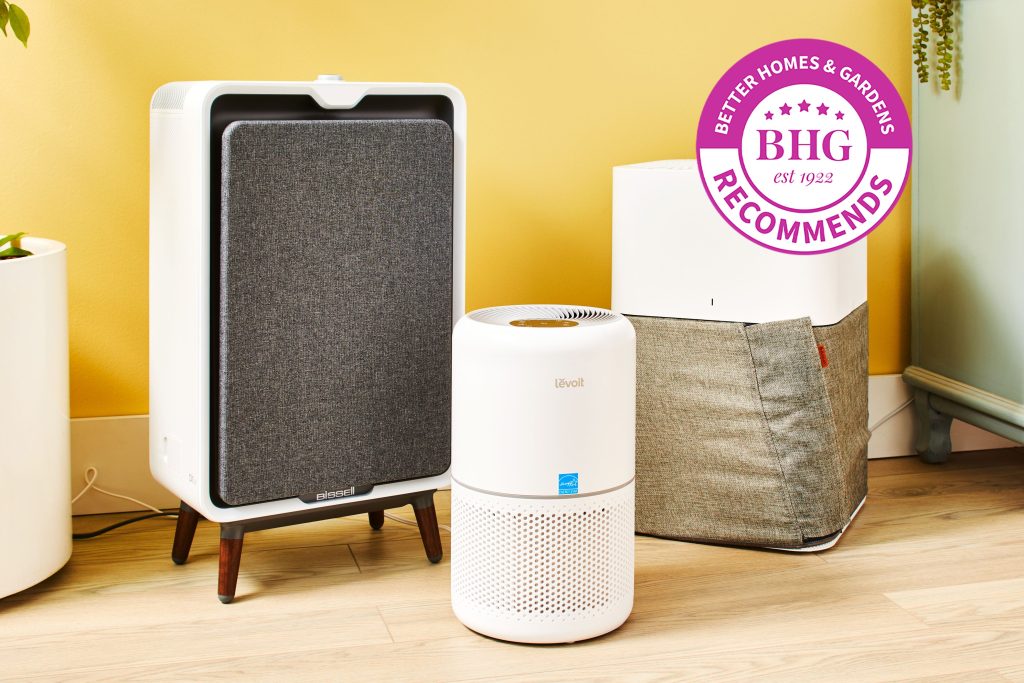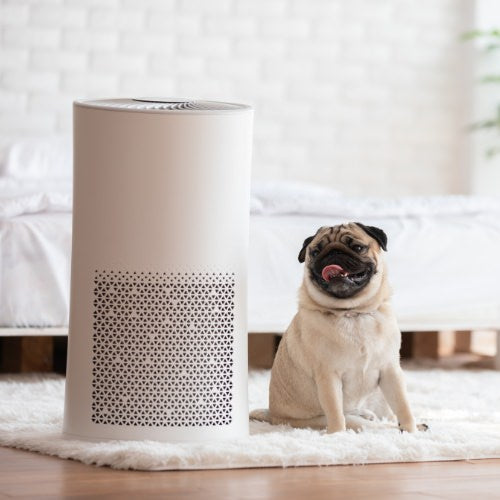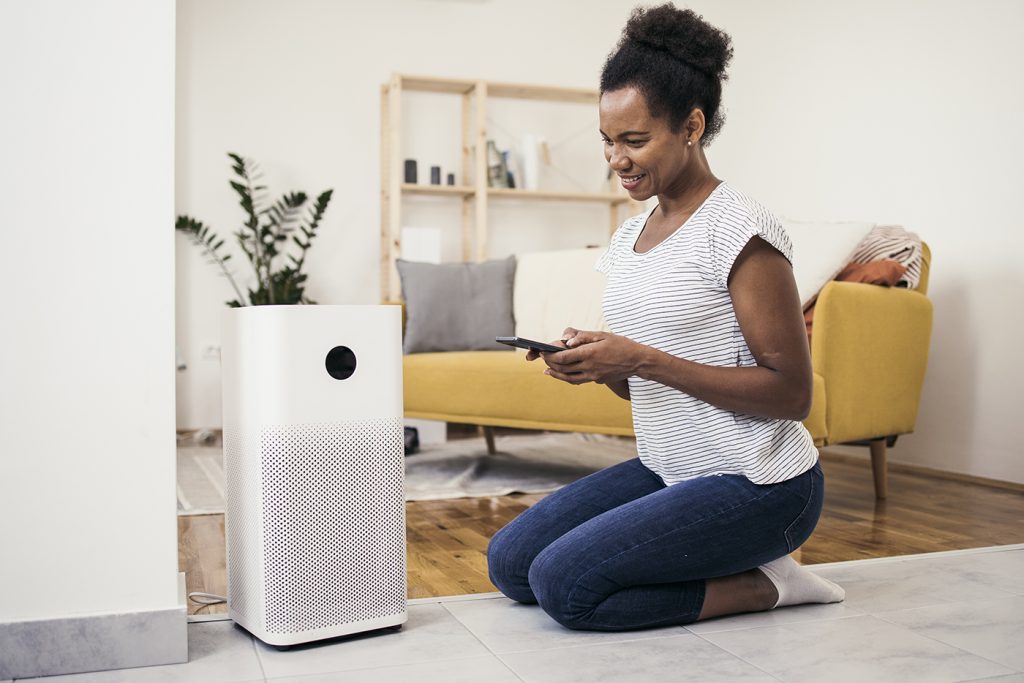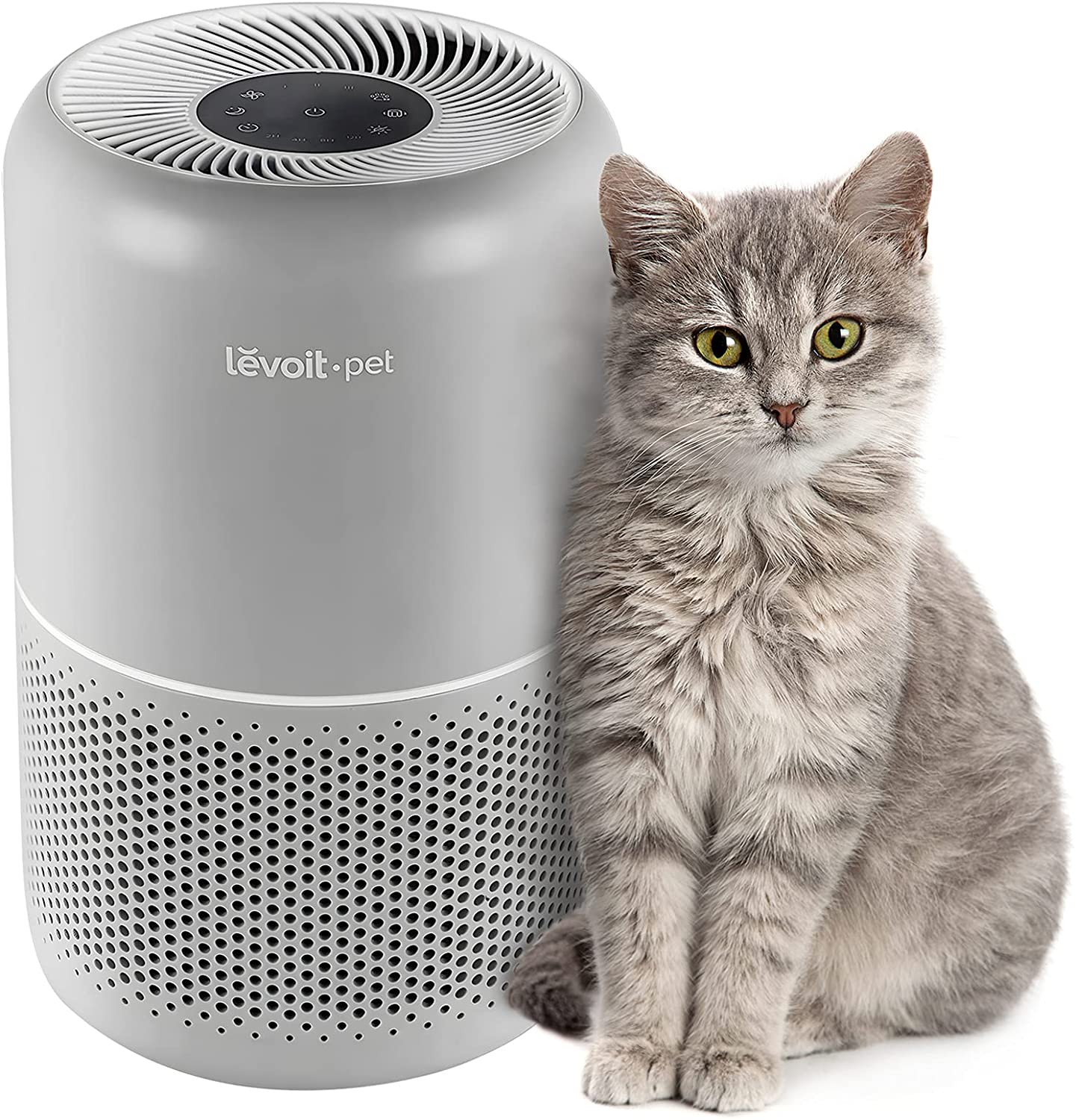If you adore animals but have pet allergies, you might be wondering if air purifiers might provide any comfort. Yes, it is the answer. Even if you have several furry pals in your house, air purifiers can be a useful tool for decreasing pet allergies. Air purifiers produce a cleaner and healthier atmosphere for allergy sufferers by removing pet dander and other allergens from the air. As a result, you can still enjoy your pets’ company without having to deal with itchiness and sneezing fits all the time.

What are Pet Allergies?
Definition of pet allergies
An immunological response brought on by proteins in an animal’s skin cells, saliva, or urine is referred to as a pet allergy. Individuals who are sensitive to or allergic to certain proteins, sometimes known as allergens, may experience allergic reactions. Cats, dogs, birds, hamsters, and other hairy or feathery pets can all be sources of common allergens. The immune system of a person may misidentify these allergens as hazardous when exposed to them, leading to the release of histamines and allergy symptoms.
Common symptoms of pet allergies
Symptoms of pet allergies might include, but are not limited to:
- Sneezing and a runny or stuffy nose: When you are allergic to pets, exposure to their allergens can trigger irritation in your nasal passages, leading to sneezing and a runny or stuffy nose.
- Itchy, watery eyes: Pet allergens can also cause your eyes to become red, itchy, and watery. This discomfort can be particularly bothersome if you are a pet lover.
- Coughing and wheezing: Allergic reactions to pets can extend to your respiratory system, causing coughing and wheezing.
- Skin reactions: Coming into contact with pet allergens or being licked by an animal you are allergic to may result in skin reactions such as hives, itching, or eczema.
- Asthma exacerbation: Individuals with asthma may experience worsened symptoms when exposed to pet allergens, leading to increased wheezing, chest tightness, and difficulty breathing.
It’s crucial to remember that pet allergies can range in severity, with some people just suffering moderate symptoms and others possibly reacting more severely. A healthcare provider should be consulted for a complete diagnosis if you believe you may be allergic to pets.
How do Air Purifiers Work?
Explanation of air purifier functions
Pet allergens are among the airborne particles that air purifiers capture and remove from the air you breathe. These gadgets accomplish this using a variety of methods, such as:
- Mechanical Filtration: Many air purifiers incorporate a physical filter, typically made of HEPA (High-Efficiency Particulate Air) material. HEPA filters are designed to capture particles as small as 0.3 microns, effectively trapping pet allergens like pet dander, dust mites, and pollen.
- Activated Carbon Filtration: Some air purifiers also feature activated carbon filters. These filters are effective at trapping odors, chemicals, and volatile organic compounds (VOCs) released by pets, preventing them from circulating in the air.
- Ultraviolet (UV) Germicidal Irradiation: Certain air purifiers utilize UV germicidal lamps to kill bacteria, viruses, and mold spores that may be present in the air. By sterilizing these harmful microorganisms, the air purifier helps maintain a cleaner and healthier environment.
- Ionization: Another technology employed by air purifiers is ionization. These devices emit negative ions into the air, which attach to particles and cause them to become heavy, subsequently dropping them out of the air. This process can enhance the effectiveness of filtration.
Types of air purifiers available
There are various types of air purifiers on the market, each with unique benefits and skills:
- HEPA Air Purifiers: These air purifiers, equipped with HEPA filters, are highly effective at capturing pet allergens. HEPA filters are trusted for their ability to trap microscopic particles, making them an ideal choice for individuals with pet allergies.
- Activated Carbon Air Purifiers: If odors are a concern in addition to pet allergens, air purifiers with activated carbon filters are an excellent option. These filters can neutralize and remove unpleasant smells caused by pets.
- UV Air Purifiers: For individuals seeking additional germ-fighting capabilities, UV air purifiers are a great choice. By utilizing UV germicidal technology, these purifiers can help destroy bacteria, viruses, and mold spores, ensuring a cleaner and healthier indoor environment.
- Ionizers: Air purifiers with ionization technology can effectively reduce the concentration of particles in the air, including pet allergens. However, it is important to note that ionizers may produce small amounts of ozone, which can be a concern for individuals with respiratory conditions.
Choosing the right type of air purifier depends on your specific needs, the severity of your pet allergies, and the features you prioritize.
Benefits of Air Purifiers for Pet Allergies
Reduction of allergens in the air
Reducing the amount of pet allergens in the air is one of the main advantages of utilizing air purifiers for pet allergies. Pet dander is a typical allergen that can remain in the air and cause allergy reactions. Pet dander is made up of microscopic skin cells that animals shed. Pet allergens are effectively captured by air purifiers with HEPA filters, offering relief to those who are sensitive to these irritants. Air purifiers make interior spaces cleaner and healthier by eliminating allergens from the air.
Improvement in allergy symptoms
People with pet allergies can see a considerable improvement in their allergy symptoms thanks to air purifiers. These gadgets assist limit exposure and the immune system’s burden from pet allergies by lowering their concentration in the air. This decrease in allergens may result in lessening of symptoms like itchy eyes, sneezing, and coughing, which may enhance general comfort and wellbeing.
Prevention of allergy flare-ups
When paired with other preventative measures, using air purifiers in households with pets can help reduce allergy flare-ups. Air purifiers can be a useful tool in regulating and lowering allergen exposure, even if it is challenging to completely eradicate all pet allergies. These appliances work to maintain reduced allergen levels by filtering the air continually, which reduces the likelihood that allergy symptoms will worsen or occur more frequently.
Considerations When Choosing an Air Purifier
Size of the room
It is crucial to take the size of the space into account when choosing an air purifier for pet allergies. The maximum coverage area of an air purifier is commonly expressed in square feet. For the purifier to operate at its best, it must be able to sufficiently clean the air in the space where your pets spend the most of their time. You might want to think about getting more air purifiers or picking a model made for bigger spaces if you have a big house or intend to use it in multiple rooms.
CADR rating
The Clean Air Delivery Rate (CADR) is a measurement that shows how well an air purifier works to remove airborne contaminants. According to how well the air purifier removes dust, pollen, and smoke, it is rated by CADR. A faster and more effective air purification process is indicated by higher CADR scores. Prioritize models with higher CADR ratings when choosing an air purifier for pet allergies as they will be better able to remove pet allergens from the air.
Filter types
Filter types used by various air purifiers each have their own benefits. When it comes to removing pet allergens, including pet dander, HEPA filters are regarded as the industry standard. Filters made of activated carbon are excellent at removing odors, making them perfect for houses with pets that could release offensive odors. Some air purifiers may combine many filters for better effectiveness. When comparing filter options, take into account your unique needs and pick the air purifier that best meets them.

Effectiveness of Air Purifiers with Multiple Pets
Impact of multiple pets on allergen levels
The amount of pet allergens in the air might drastically increase if you have many pets in your home. Each pet releases allergens, such as saliva proteins and pet dander, which increases the burden of allergens on allergic people. Because of this, more steps are needed to properly decrease allergy exposure when there are several pets present.
Air purifiers’ ability to handle multiple allergens
Multiple pet allergens are one of the many allergens that air purifiers are made to manage. Air purifiers can considerably lower allergenic particles even in homes with several pets since they can capture and eliminate pet allergens from the air. Particularly HEPA filters are essential for catching pet dander and efficiently lowering allergy levels.
Choosing the right size and type of air purifier for multiple pets
It’s critical to take the size of the space and the number of pets into account when choosing an air purifier for a home with many dogs. To effectively handle allergy control, a larger room or many rooms may need more than one air purifier. Additionally, use air purifiers with HEPA filters to ensure the best allergen collection. In houses with numerous dogs, selecting the proper size and kind of air purifier is crucial to ensuring thorough allergen elimination.
Tips for Using Air Purifiers in a Multiple Pet Household
Placing air purifiers strategically
In a home with several pets, strategically placing air purifiers is essential to optimize their efficiency. Think about putting the air purifiers in the living spaces or bedrooms where your dogs spend the most time. Furthermore, placing them close to sources of pet allergens, such as your pets’ sleeping locations or preferred resting places, will aid in more effective allergen collection. To determine the best positioning for the most allergy reduction, try out various places.
Regular cleaning and maintenance
Regular cleaning and maintenance are necessary to keep air purifiers operating at their best. You should always clean and replace filters according to the manufacturer’s directions because each air purifier may have distinct needs. To avoid a buildup of allergies that become trapped and to maintain the effectiveness of the purifier in catching pet allergens, clean or replace the filters as directed.
Combining air purifiers with other allergy prevention measures
Air purifiers can reduce pet allergens, but they are most effective when used in conjunction with other allergy avoidance techniques. Allergen levels can be decreased by regularly cleaning your home, regularly grooming your dogs, and preventing them from entering your bedroom. Other helpful habits include periodically washing bedding and vacuuming with a HEPA-filtered vacuum cleaner. You may make your home healthier and more comfortable for you and your pets by using a multifaceted approach to allergy control.

Potential Drawbacks of Air Purifiers
Initial cost and ongoing expenses
Aside from their initial price, air purifiers frequently need to have their filters replaced on a regular basis. Consider your budget and the long-term costs involved in maintaining the air purifier before making a purchase. For those with pet allergies, the expenditures of the initial purchase and filter replacements may be outweighed by the advantages of fewer allergy symptoms and better air quality.
Noise levels
It’s crucial to be aware that when operating, air purifiers can make noise. Depending on the model and fan speed choices, the noise levels change. Choose an air purifier with a lower noise level or one that has a sleep mode for quieter operation if you are easily startled during sleep or sensitive to noise. A few versions additionally let you change the fan speed to suit your preferred degree of noise.
Limitations in capturing all allergens
Although air purifiers are efficient at trapping and eliminating pet allergens, they could not completely rid your home of allergens. The purifier’s range may not include surfaces like furniture, carpets, and walls where pet allergens may congregate. To maintain a low allergen environment, regular cleaning and meticulous housekeeping procedures are still required. Utilizing air purifiers in addition to these activities can produce more significant reductions in pet allergies.
Expert Recommendations on Air Purifiers for Pet Allergies
Advice from allergists and veterinarians
Air purifiers are frequently advised by allergists and veterinarians for people with pet allergies. These experts consider air purifiers to be a crucial part of comprehensive allergy therapy because of their effectiveness in minimizing pet allergens. Personalized guidance on selecting the best air purifier for your unique needs can be obtained by speaking with an allergist or veterinarian.
Specific air purifier models recommended
For people with pet allergies, specialists typically suggest certain air purifier models. Many people think that models with HEPA filtration, activated carbon filters, and UV germicidal technologies are good options. The Coway Mighty Air Purifier, Winix 5500-2 Air Purifier, and Honeywell True HEPA Allergen Remover are a few examples of air purifiers that professionals consistently commend. These types are renowned for their capacity to remove odors, purify the air, and capture allergens.

Real-Life Experiences with Air Purifiers in Multiple Pet Homes
Personal accounts of pet owners
Numerous pet owners who encounter pet allergies have praised the effectiveness of air purifiers. These people claim that after installing air purifiers in their homes, their allergy symptoms and overall quality of life significantly improved. According to individual experiences, air purifiers are efficient at lowering pet allergens and improving indoor comfort.
Success stories and challenges faced
Success tales with air purifiers in various pet homes frequently highlight the apparent improvement in breathing and decrease in allergy symptoms. People have talked about how air purifiers have made it possible for them to coexist peacefully with pets. However, it’s crucial to be aware that difficulties could occur, especially if people have severe allergies or own dogs that release a lot of allergens. In these situations, a multifaceted strategy that combines air purifiers with safety precautions and meticulous cleaning techniques may be required.
Conclusion
Even in houses with several dogs, air purifiers can be quite helpful in treating pet allergies. Air purifiers enhance indoor air quality and reduce allergy symptoms by lowering the amount of pet allergens in the air. To achieve optimal performance, take into account variables like room size, CADR rating, and filter types while choosing an air purifier. Air purifiers can be made even more successful by using them in strategic locations, performing routine maintenance, and combining them with other preventative measures. Even while they might not completely get rid of allergies, air purifiers are an important tool for making homes for both pets and their owners healthier and more pleasant. When selecting the best air purifier for your particular needs, consulting with experts and taking into account personal experiences can offer insightful advice. In the end, you can profit from lowered allergies and improved wellbeing by introducing air purifiers into your home with many pets.
Recommendations: MORFY Air Purifier

